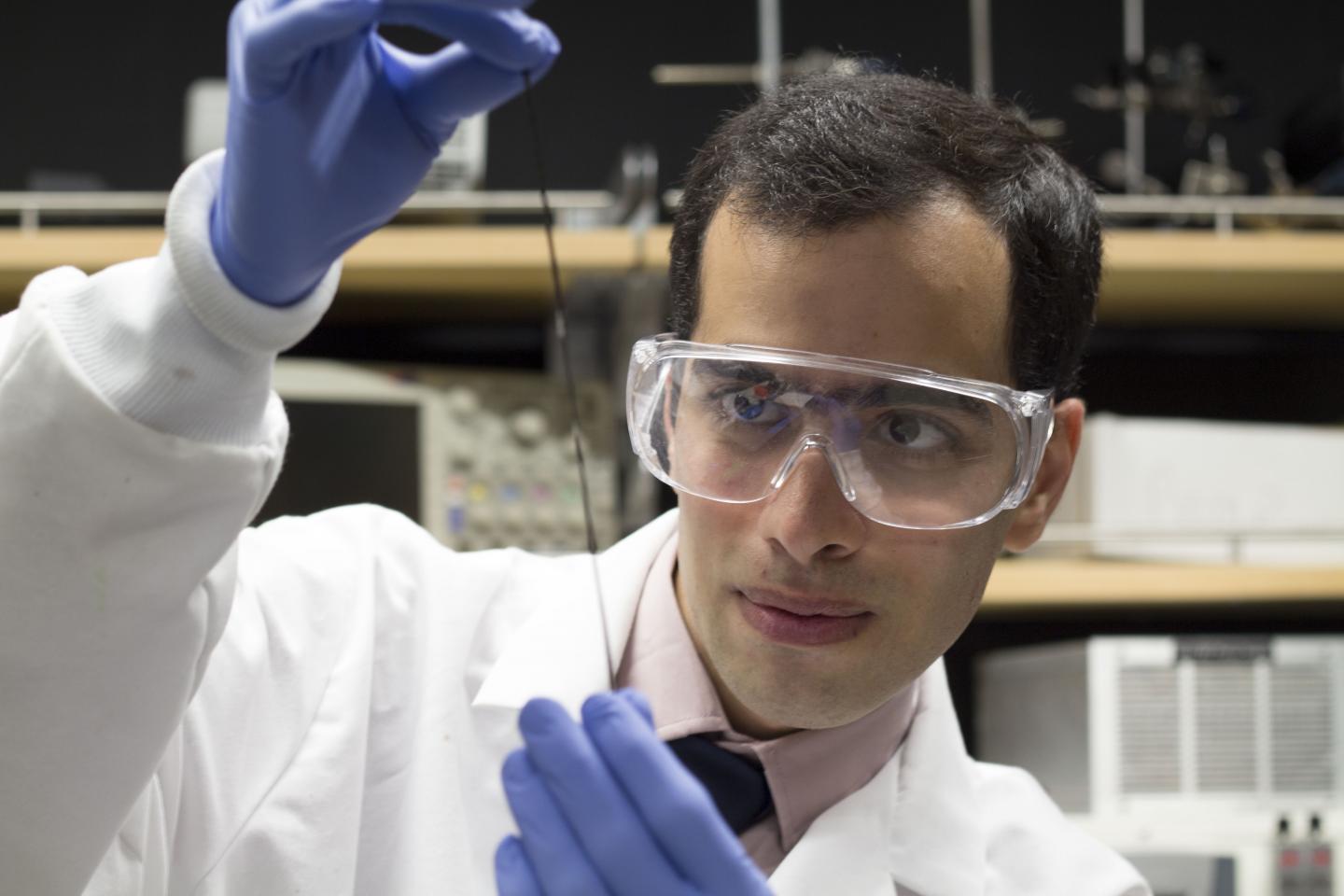Device will impact composites manufacturing and health-monitoring industries

Credit: UBCO Okanagan
Forget the smart watch. Bring on the smart shirt.
Researchers at UBC Okanagan’s School of Engineering have developed a low-cost sensor that can be interlaced into textiles and composite materials. While the research is still new, the sensor may pave the way for smart clothing that can monitor human movement.
The embedded microscopic sensor is able to recognize local motion through the stretching of the woven yarns that are treated with graphene nanoplatelets that can read the body’s activity, explains Engineering Professor Mina Hoorfar.
“Microscopic sensors are changing the way we monitor machines and humans,” says Hoorfar, lead researcher at the Advanced Thermo-Fluidic Lab at UBC’s Okanagan campus. “Combining the shrinking of technology along with improved accuracy, the future is very bright in this area.”
This ‘shrinking technology’ uses a phenomenon called piezo-resistivity–an electromechanical response of a material when it is under strain. These tiny sensors have shown a great promise in detecting human movements and can be used for heart rate monitoring or temperature control, explains Hoorfar.
Her research, conducted in partnership with UBC Okanagan’s Materials and Manufacturing Research Institute, shows the potential of a low-cost, sensitive and stretchable yarn sensor. The sensor can be woven into spandex material and then wrapped into a stretchable silicone sheath. This sheath protects the conductive layer against harsh conditions and allows for the creation of washable wearable sensors.
While the idea of smart clothing–fabrics that can tell the user when to hydrate, or when to rest–may change the athletics industry, UBC Professor Abbas Milani says the sensor has other uses. It can monitor deformations in fibre-reinforced composite fabrics currently used in advanced industries such as automotive, aerospace and marine manufacturing.
The low-cost stretchable composite sensor has also shown a high sensitivity and can detect small deformations such as yarn stretching as well as out-of-plane deformations at inaccessible places within composite laminates, says Milani, director of the UBC Materials and Manufacturing Research Institute.
The testing indicates that further improvements in its accuracy could be achieved by fine-tuning the sensor’s material blend, and improving its electrical conductivity and sensitivity. Eventually, this can make it able to capture major flaws like ‘fibre wrinkling’ during the manufacturing of advanced composite structures such as those currently used in airplanes or car bodies.
“Advanced textile composite materials make the most of combining the strengths of different reinforcement materials and patterns with different resin options,” he says. “Integrating sensor technologies like piezo-resistive sensors made of flexible materials compatible with the host textile reinforcement is becoming a real game-changer in the emerging era of smart manufacturing and current automated industry trends.”
###
The research, published recently in Small was conducted by researchers at the Composites Research Network and the Advanced Thermo-Fluidic Lab with funding from the Natural Sciences and Engineering Research Council.
Media Contact
Patty Wellborn
[email protected]
Original Source
https:/
Related Journal Article
http://dx.



